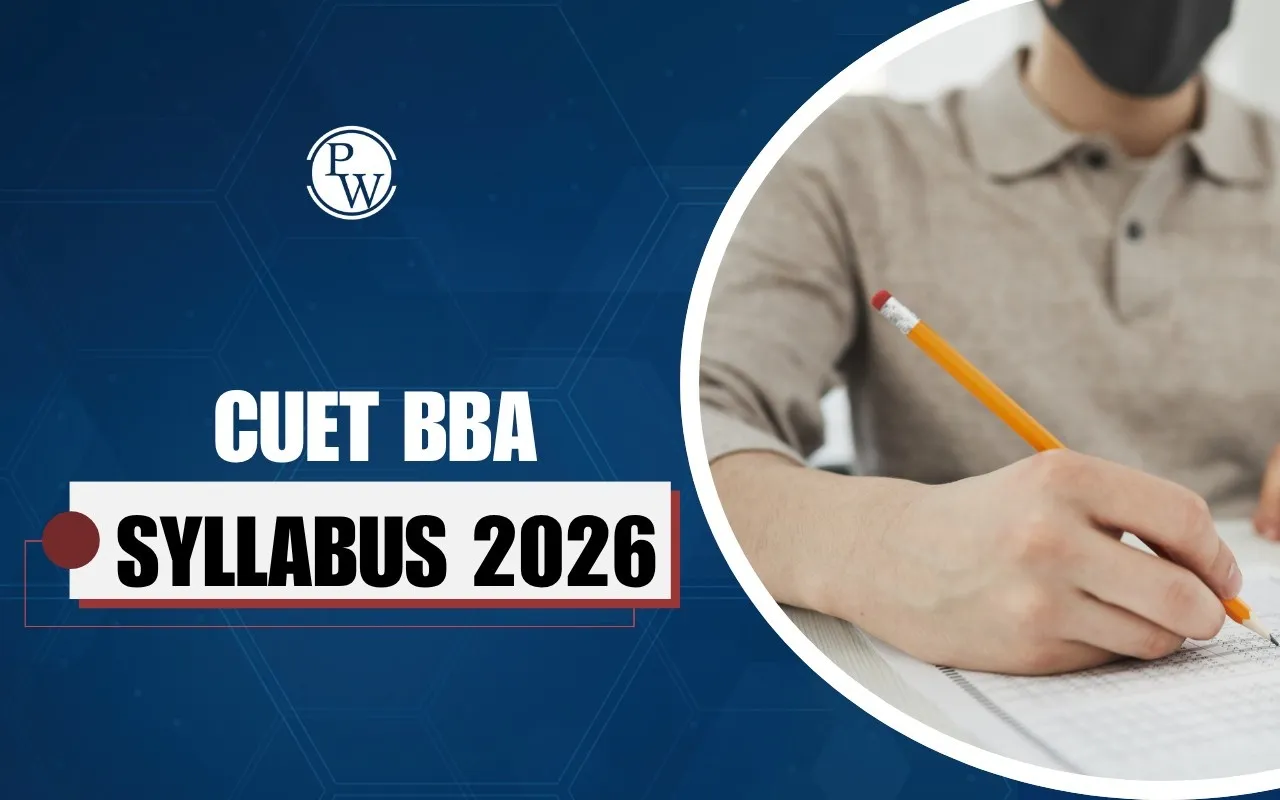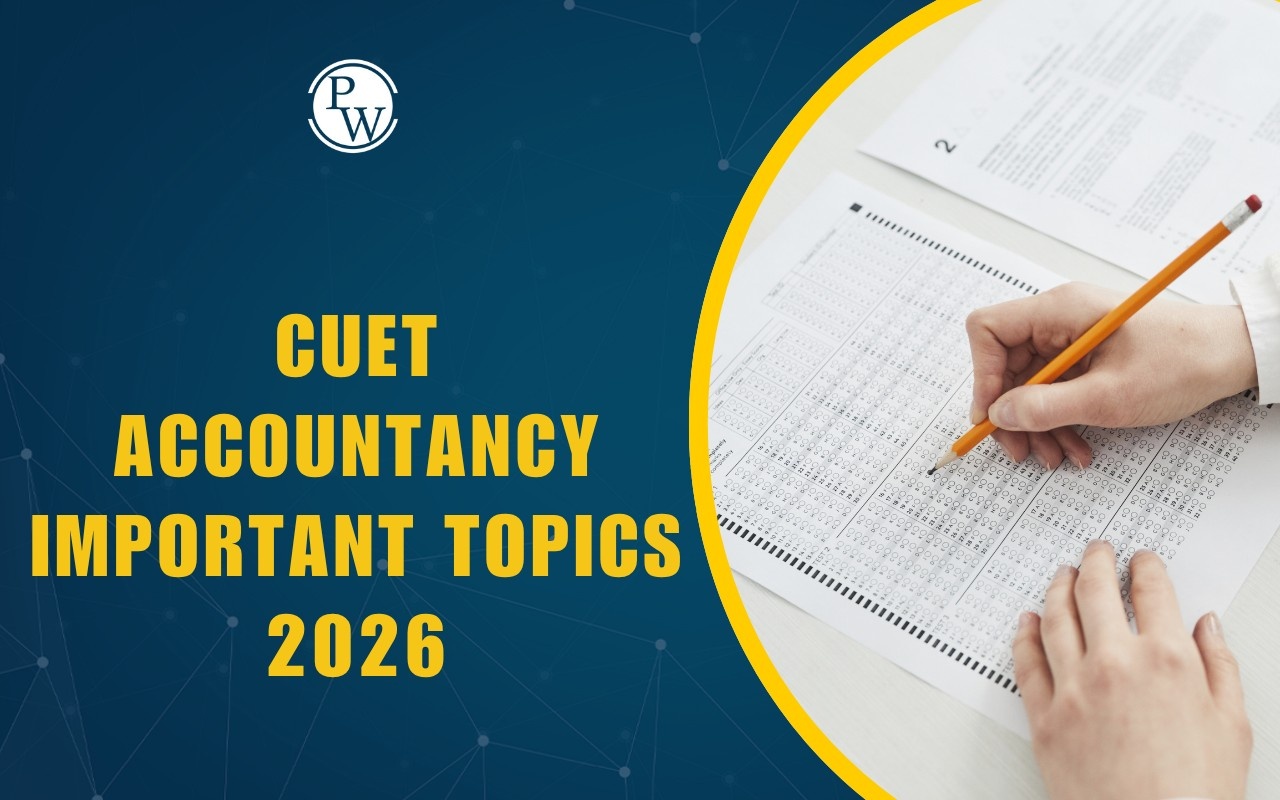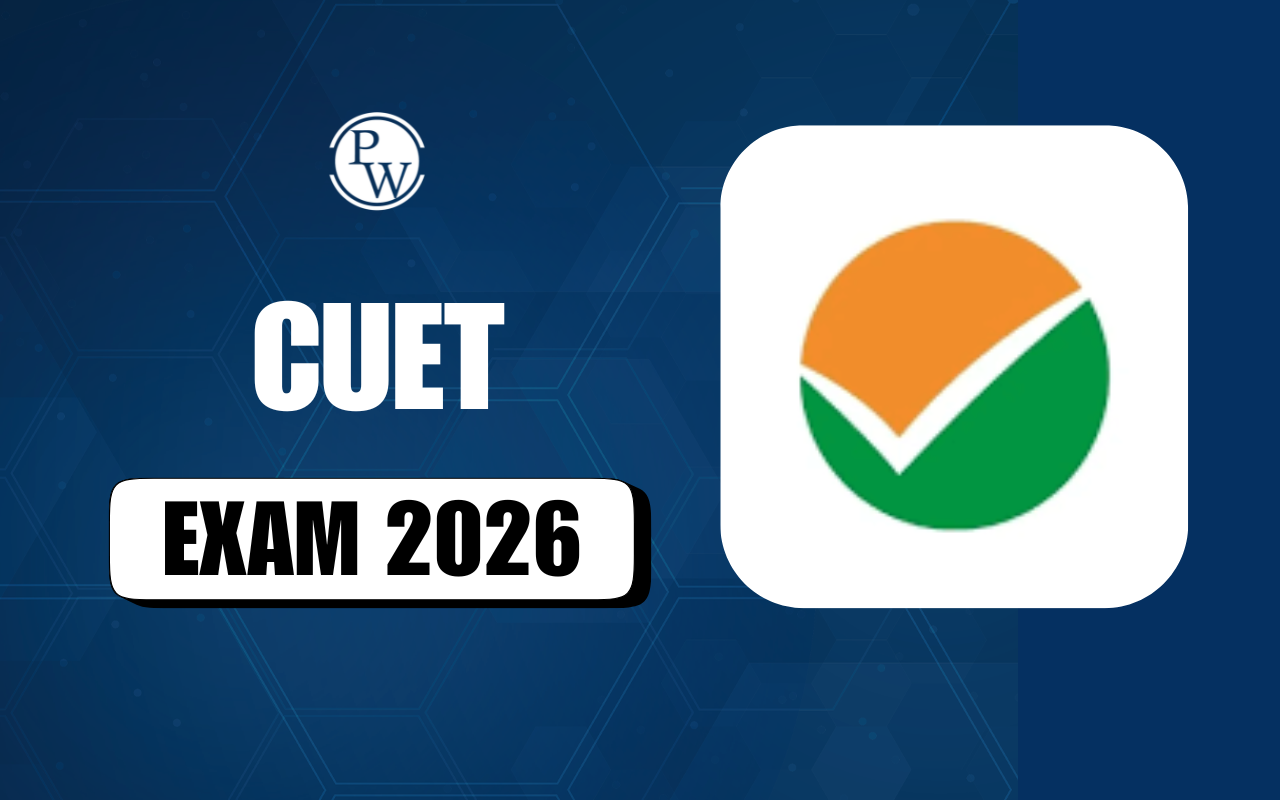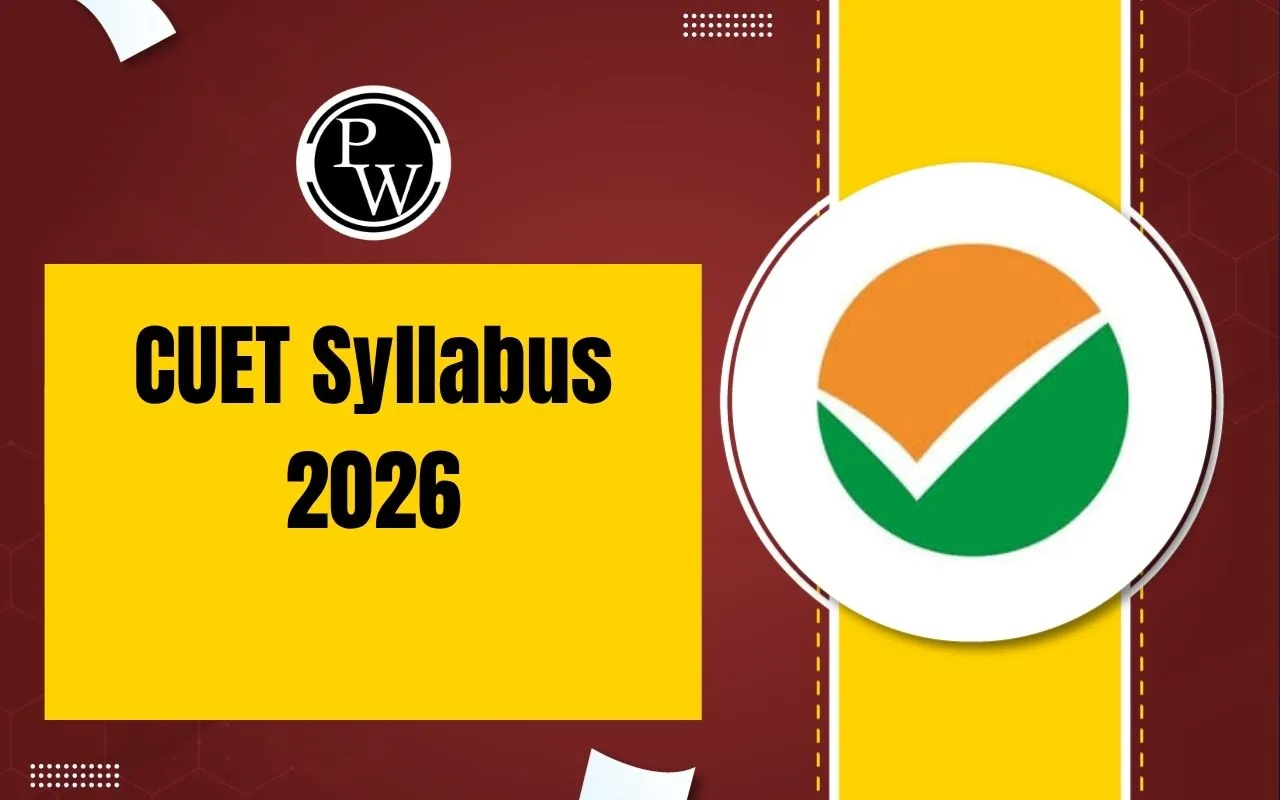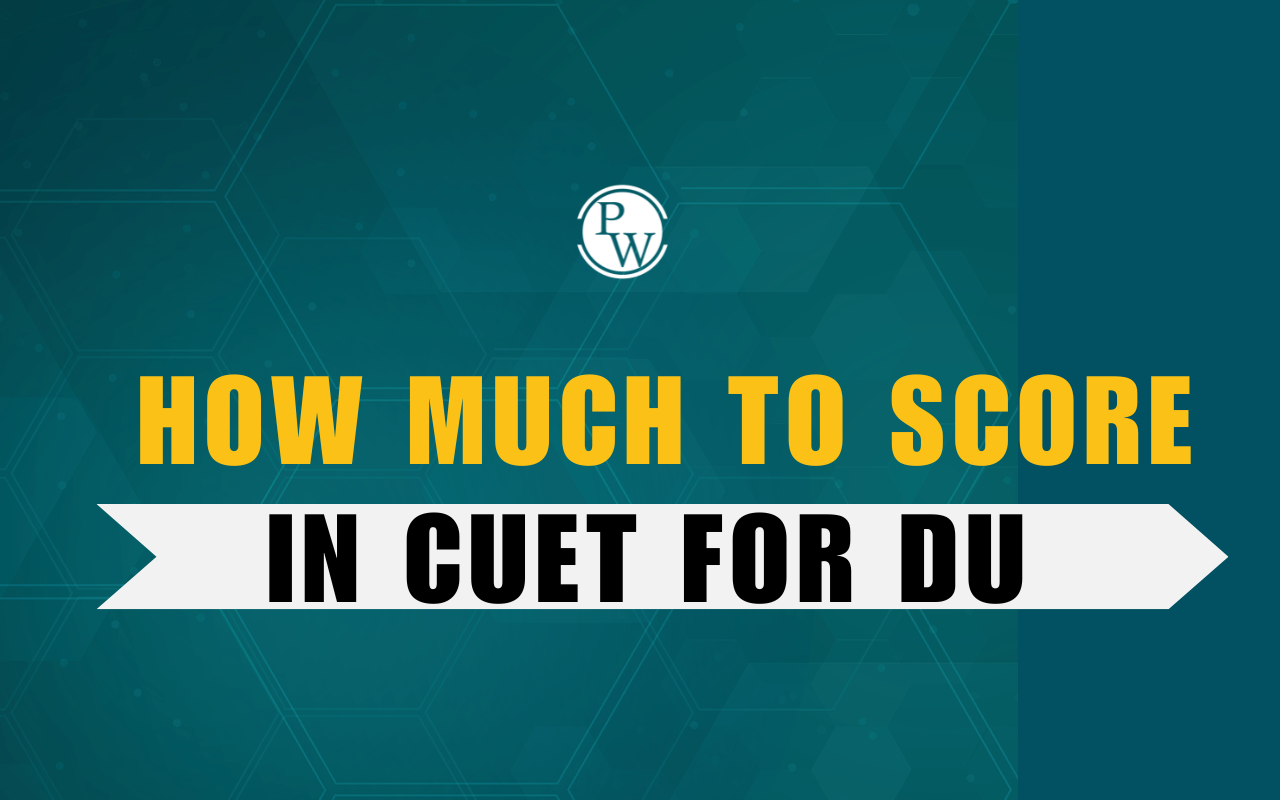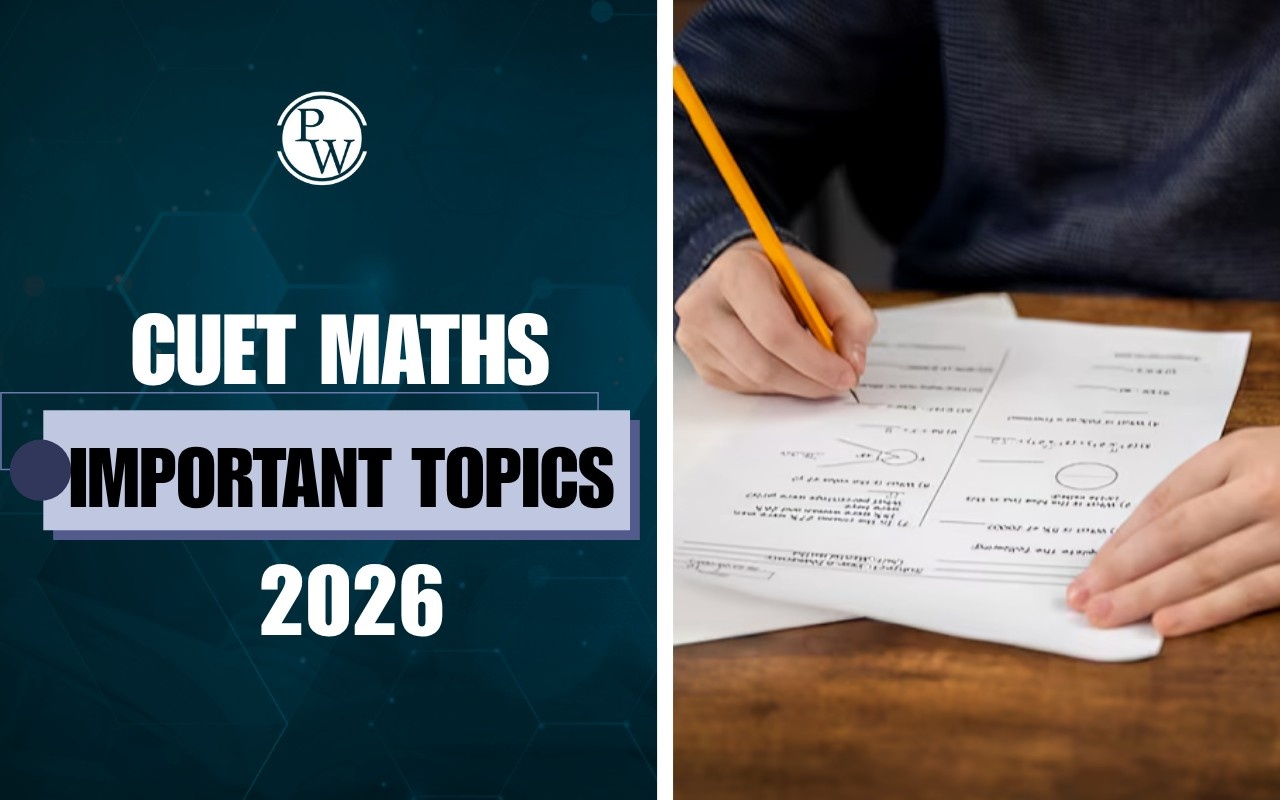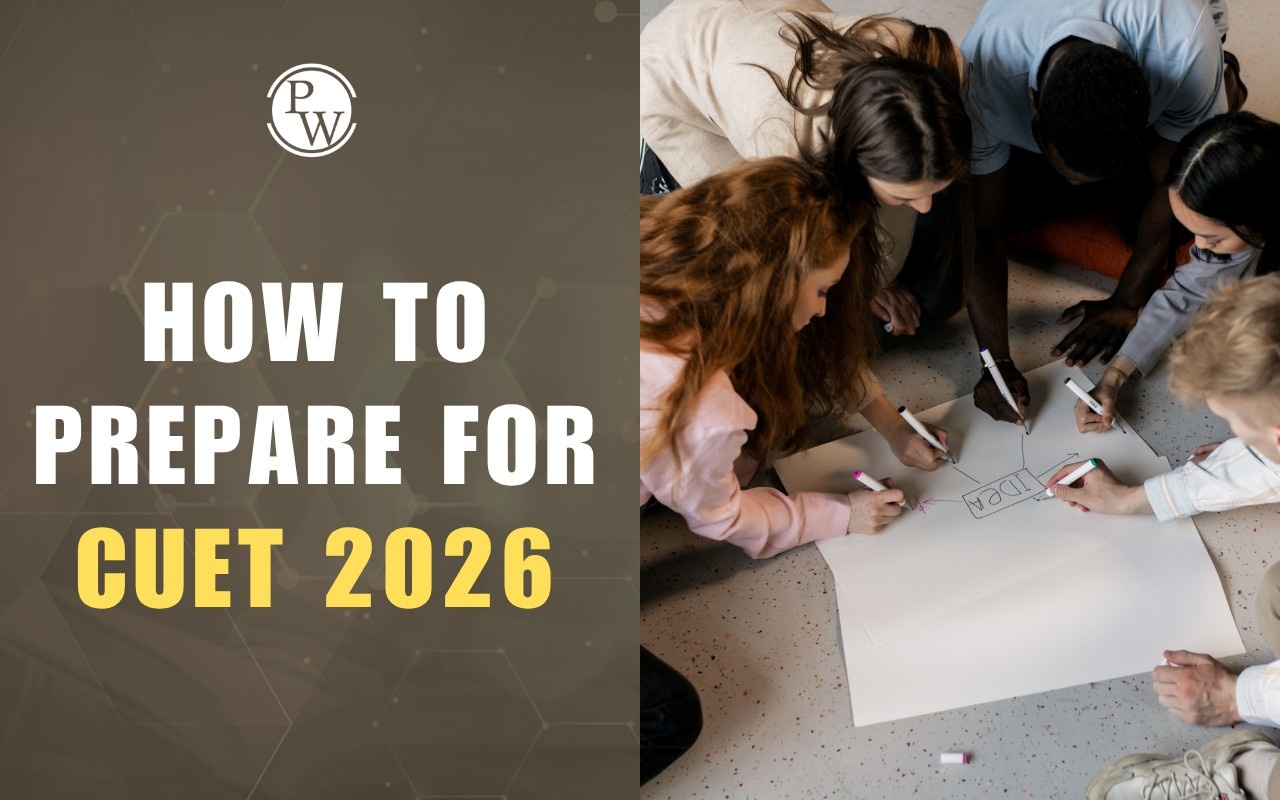
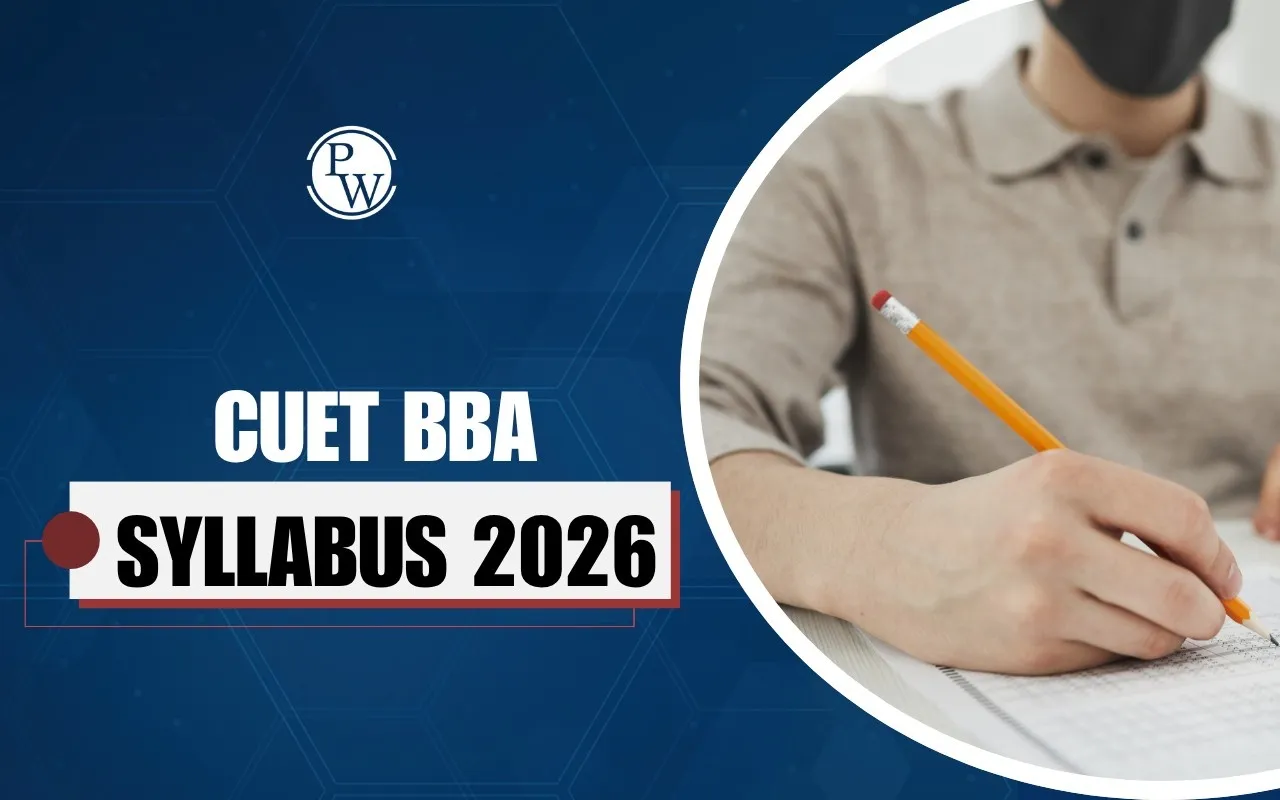
CUET BBA Syllabus 2026 includes core subjects such as Business Studies, Mathematics/Applied Mathematics, and a General Test. The syllabus is based on the Class 12th NCERT curriculum. The CUET BBA Syllabus 2026 covers fundamental topics like management principles, business finance, marketing, algebra, calculus, probability, and statistics.
Understanding the syllabus helps streamline study efforts, focus on high-weightage topics, and manage time effectively during preparation. Familiarity with the CUET UG BBA subject-wise syllabus allows students to identify strengths and weaknesses and ensures comprehensive coverage for the exam.
CUET BBA Syllabus 2026 Overview
CUET BBA Syllabus 2026 consists of multiple sections to evaluate a candidate’s analytical, language, and management abilities. The exam is designed to assess both conceptual understanding and problem-solving skills.
Here are key highlights of the CUET BBA Syllabus 2026:
| CUET BBA Syllabus 2026 | |
| Particulars | Details |
| Status of CUET BBA Syllabus | Available in PDF |
| CUET Exam Conducting Body | National Testing Agency (NTA) |
| Medium of Exam | 13 languages - English, Hindi, Urdu, Assamese, Bengali, Odia, Punjabi, Gujarati, Marathi, Tamil, Telugu, Kannada, Malayalam |
| CUET BBA Subject Mapping | Section 1- Any one language, Section 2- Business Studies, Mathematics/Applied MathematicsSection 3- General Test |
Detailed CUET BBA Syllabus 2026
The CUET BBA Syllabus 2026 includes sections on Business Studies, Mathematics or Applied Mathematics, and a General Test that evaluates reasoning, quantitative ability, and current affairs. This comprehensive CUET syllabus ensures candidates are well-prepared for admission to top universities through CUET. The CUET BBA syllabus 2026 in detail is given below.
CUET BBA Syllabus 2026 for Business Studies
CUET Business Studies question paper will include a total of 50 questions, from which candidates are required to answer any 40. This format gives some flexibility, allowing students to choose questions they feel most confident about. The detailed syllabus is given below:
| CUET BBA Syllabus 2026 for Business Studies | |
| Units | Syllabus |
| Principles and Functions of Management | |
| Unit 1- Nature and Significance of Management |
|
| Unit 2- Principles of Management |
|
| Unit 3- Business Environment |
|
| Unit 4- Planning |
|
| Unit 5- Organising |
|
| Unit 6- Staffing |
|
| Unit 7- Directing |
|
| Unit 8- Controlling |
|
| Business Finance and Marketing | |
| Unit 9- Business Finance |
|
| Unit 10- Finance Markets |
|
| Unit 11- Marketing |
|
| Unit 12- Consumer Protection |
|
| Unit 13- Entrepreneurship Development |
|
CUET BBA Syllabus 2026 for Mathematics/Applied Mathematics
CUET Mathematics question paper consists of two main sections, namely, Section A and Section B, with Section B further divided into B1 and B2. Section A comprises 15 compulsory questions, covering core topics in Mathematics and Applied Mathematics.
Section B is split into two parts. B1 includes 35 Mathematics questions, where candidates must attempt 25. B2 consists of 35 Applied Mathematics questions, with 25 to be attempted. Here is the detailed syllabus:
| CUET BBA Syllabus 2026 for Mathematics/Applied Mathematics | |
| Topics | Syllabus |
| Section A | |
| Algebra | (i) Matrices and types of Matrices(ii) Equality of Matrices, transpose of a Matrix,Symmetric and Skew Symmetric Matrix(iii) Algebra of Matrices(iv) Determinants(v) Inverse of a Matrix(vi) Solving simultaneous equations using MatrixMethod |
| Calculus | (i) Higher order derivatives(ii) Tangents and Normals(iii) Increasing and Decreasing Functions(iv). Maxima and Minima |
| Integration and its Application | (i) Indefinite integrals of simple functions(ii) Evaluation of indefinite integrals(iii) Definite Integrals(iv). Application of Integration as area under theCurve |
| Differential Equation | (i) Order and degree of differential equations(ii) Formulating and solving of differential equationswith variable separable |
| Probability Distribution | (i) Random variables and its probability distribution(ii) Expected value of a random variable(iii) Variance and Standard Deviation of a randomvariable(iv). Binomial Distribution |
| Linear Programming | (i) Mathematical formulation of LinearProgramming Problem(ii) Graphical method of solution for problems in twovariables(iii) Feasible and infeasible regions(iv). Optimal feasible solution |
| Section B1- Mathematics | |
| Unit 1- Relations and Functions | 1. Relations and Functions: Types of relations, Reflexive, symmetric, transitive and equivalence relations. One-to-one and onto functions, composite functions, the inverse of a function, and Binary operations. 2. InverseTrigonometric Functions: Definition,range, domain, principal value branches. Graphs of inverse trigonometric functions. Elementary properties of inverse trigonometric functions. |
| Unit 2- Algebra | Matrices and Determinants |
| Unit 3- Calculus | Continuity and DifferentiabilityApplications and DerivationsIntegralsApplications of the IntegralsDifferential Equation |
| Unit 4- Vectors and three-dimensional Geometry | 1. Vectors: Vectors and scalars, magnitude and direction of a vector. Direction cosines/ratios of vectors.Types of vectors(equal, unit, zero, parallel and collinear vectors), position vector of a point, negative of a vector, components of a vector, the addition of vectors, multiplication of a vector by a scalar, position vector of a point dividing a line segment in a given ratio. Scalar(dot) product of vectors, projection of a vector on a line.Vector(cross) product of vectors, scalar triple product.2. Three-dimensional Geometry: Direction cosines/ratios of a line joining two points.Cartesian and vector equation of a line, co-planar and skew lines, the shortest distance between two lines. Cartesian and vector equation of a plane. The angle between (i)two lines,(ii)two planes,(iii) a line and a plane. Distance of a point from a plane. |
| Unit 5- Linear Programming | Introduction, related terminology such as constraints, objective function, optimization, different types of linear programming (L.P.) problems, mathematical formulation of L.P. problems, graphical method of solution for problems in two variables, feasible and infeasible regions, feasible and infeasible solutions, optimal feasible solutions (up to three non-trivial constraints). |
| Unit 6- Probability | Multiplications theorem on probability. Conditional probability, independent events, total probability, Bayes’ theorem. Random variable and its probability distribution, mean, and variance of a haphazard variable. Repeated independent (Bernoulli) trials and the Binomial distribution. |
| Section B2- Applied Mathematics | |
| Unit 1- Numbers, Quantification and Numerical Applications | A. Modulo Arithmetic1. Define the modulus of an integer 2. Apply arithmetic operations using modular arithmetic rules B. Congruence Modulo 1. Define congruence modulo 2. Apply the definition in various problems C. Allegation and Mixture 1. Understand the rule of allegation to produce a mixture at a given price 2. Determine the mean price of a mixture 3. Apply the rule of allegation D. Numerical Problems 1. Solve real-life problems mathematically E. Boats and Streams 1. Distinguish between upstream and downstream 2. Express the problem in the form of an equation F. Pipes and Cisterns 1. Determine the time taken by two or more pipes to fill or G. Races and Games 1. Compare the performance of two players w.r.t. time, 2. distance taken/distance covered/ Work done from the given data H. Partnership 1. Differentiate between active partner and sleeping partner 2. Determine the gain or loss to be divided among the partners in the ratio of their investment with due consideration of the time volume/surface area for solid formed using two or more shapes. I. Numerical Inequalities 1. Describe the basic concepts of numerical inequalities 2. Understand and write numerical inequalities |
| Unit 2- Algebra | A. Matrices and types of matrices 1. Define matrix 2. Identify different kinds of matrices B. Equality of matrices, Transpose of a matrix, Symmetric and Skew symmetric matrix 1. Determine equality of two matrices 2. Write transpose of given matrix 3. Define symmetric and skew symmetric matrix |
| Unit 3- Calculus | A. Higher Order Derivatives 1. Determine second and higher-order derivatives 2. Understand the differentiation of parametric functions and implicit functions Identify dependent and independent variables B. Marginal Cost and Marginal Revenue using derivatives 1. Define marginal cost and marginal revenue 2. Find marginal cost and marginal revenue C. Maxima and Minima 1. Determine critical points of the function 2. Find the point(s) of local maxima and local minima and corresponding local maximum and local minimum values 3. Find the absolute maximum and absolute minimum value of a function |
| Unit 4- Probability and Distribution | A. Probability Distribution 1. Understand the concept ofRandom Variables and its Probability Distributions 2. Find probability distribution of a discrete random variable B. Mathematical Expectation 1. Apply the arithmetic mean of frequency distribution to find the expected value of a random variable C. Variance 1. Calculate the Variance and S.D.of a random variable |
| Unit 5- Index Numbers and Time-Based Data | A. Index Numbers 1. Define Index numbers as a special type of average B. Construction of index numbers 2. Construct different types of index numbers C. Test of Adequacy of Index Numbers 1. Apply the time reversal test |
| Unit 6- Index Numbers And Time-Based Data | A. Population and Sample 1. Define Population and Sample 2. Differentiate between population and sample 3. Define a representative sample from a population B. Parameter and Statistics, and Statistical Interferences 1. Define the Parameter with reference to the Population 2. Define Statistics with reference to the Sample3. Explain the relation between the parameter and the Statistic 4. Explain the limitations of statistics to generalize the estimation for the population 5. Interpret the concept of Statistical Significance and statistical Inferences 6. State the Central Limit Theorem 7. Explain the relation between population, Sampling Distribution-Sample |
| Unit 7- Index Numbers And Time-Based Data | A. Time Series 1. Identify time series as chronological data B. Components of Time Series 2. Distinguish between different components of a time series C. Time Series analysis for univariate data 1. Solve practical problems based on statistical data and interpret |
| Unit 8- Financial Mathematics | A. Perpetuity, Sinking Funds 1. Explain the concept of perpetuity and sinking fund 2. Calculate perpetuity 3. Differentiate between sinking fund and savings account B. Valuation of Bonds 1. Define the concept of valuation of bond and related terms 2. Calculate value of bond using present value approach C. Calculation of EMI 1. Explain the concept of EMI 2. Calculate EMI using various methods D. Linear method of Depreciation 1. Define the concept of linear method of Depreciation 2. Interpret the cost, residual value, and useful life of an asset from the given information 3. Calculate depreciation |
| Unit 9- Linear Programming | A. Introduction and related terminology 1. Familiarize with terms related to Linear Programming Problem B. Mathematical formulation of Linear Programming Problem 1. Formulate Linear Programming Problem C. Different Types of Linear Programming Problems 1. Identify and formulate different types of LPP D. Graphical Method of Solution for problems in two Variables 1. Draw the Graph for a system of linear inequalities involving two variables and to find its solution graphically. |
CUET BBA Syllabus 2026 for General Test
CUET General Test question paper consists of 50 compulsory questions designed to assess a wide range of skills. The syllabus includes topics:
- General knowledge and current affairs, covering important national and international events.
- General mental ability and numerical ability, focusing on fundamental mathematical concepts.
- Reasoning questions evaluate quantitative arithmetic, algebra, geometry, mensuration, and statistics through simple applications.
- Logical and analytical reasoning to assess critical thinking and problem-solving skills.
CUET BBA Syllabus 2026 Preparation Tips
Preparing for CUET BBA 2026 requires a clear understanding of the syllabus and CUET exam pattern to strategize effectively. Candidates should focus on building strong fundamentals in Business Studies, Mathematics, and General Aptitude as these form the core areas of the exam.
Here are some preparation tips:
- Understand the complete syllabus and CUET BBA exam pattern 2026 thoroughly before starting preparation.
- Create a well-structured study plan that covers Business Studies, General Test, and other domain subjects included in the syllabus.
- Focus on strengthening core concepts from Class 12 NCERT textbooks.
- Practice solving CUET previous years question papers and sample tests to improve speed and accuracy.
- Attempt mock tests under exam-like conditions to improve your time management skills.
- Make concise notes for quick revision of important topics and formulas.
- Stay updated with current affairs and general knowledge topics for the General Test section.
CUET BBA Syllabus 2026 Preparation Books
For effective preparation for the CUET BBA 2026 exam, choosing the right study materials is crucial. Candidates should start with NCERT textbooks for Class 11 and 12, along with other recommended books. These books have practice questions and solved examples to strengthen your basic concepts.
You can order preparation books for CUET BBA exam from the following links.
| CUET BBA Syllabus 2026 Preparation Books | |
| Name of Books | Order Link |
| CUET (UG) Business Studies 2025 Chapterwise & Topicwise Question Bank with Past Year Questions and Mock Test | Latest 2024 Solved PYQ, NCERT Short Notes, MCQs | Link |
| CUET (UG) General Test 2025 Chapterwise & Topicwise Question Bank with Past Year Questions and Mock Test | Link |
| CUET (UG) Mathematics 2025 Chapterwise & Topicwise Question Bank with Past Year Questions (PYQs up to 2024) and Mock Tests l Chapterwise Revision Sheets | Link |
Physics Wallah provides CUET UG Online Coaching with live classes, study materials, and practice tests. The courses are designed to make learning simple and effective, helping you prepare for your CUET UG exams with ease.
CUET BBA Syllabus 2026 FAQs
What subjects are covered in the CUET BBA syllabus?
What is the exam pattern for CUET BBA 2026?
How many questions are there in each section?
Are the questions multiple-choice?
Is the CUET BBA syllabus based on NCERT?

